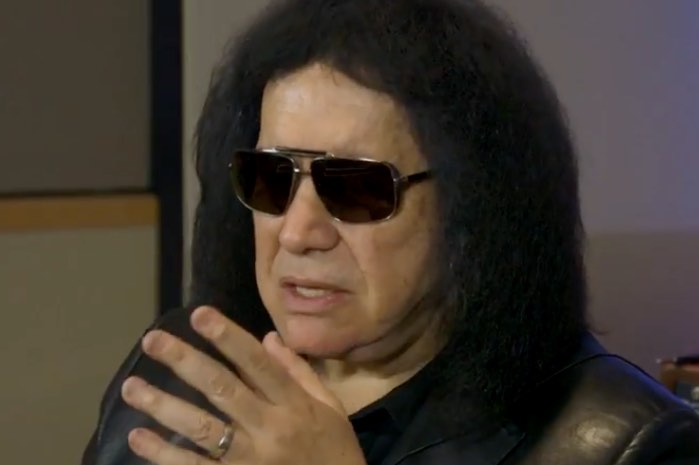The metal bass tone is one of the most essential elements in metal music. It has been around for decades and has become an essential element of many genres, such as death metal, thrash, black, and even more classic forms, such as hard rock.
Bassists play an important role, providing the bottom-end punch that defines a song’s groove and creates its atmosphere. With so much importance placed on having a good metal bass tone, it can be intimidating trying to get just the right sound from your instrument. To help you out, we have compiled some tips to help you get that killer sound you are looking for.
What is Metal Bass Tone?
Metal bass tones differ greatly depending on what genre you are playing. Each will require different techniques for achieving the desired sound. Generally speaking, heavy metal bass tones tend to be thick and punchy with lots of gains (distortion). The goal is usually to cut through all other instruments while maintaining balance throughout the mix, creating enough distortion without overwhelming or muddying up everything else in your mix.
What Does Bass Mean in Music?
Bass is one of two main components when producing music, along with the melody, which makes up harmonic structures within songs played by stringed instruments such as guitars or keyboards. Its primary purpose is to support low-end frequencies, which add depth and power behind rhythm sections and other melodic parts within compositions.
Bass also creates rhythmic movement, thus helping fill out any given arrangement and giving it sonic fullness while helping glue together various instrumental parts and production mixing tricks.
Tips to Get the Killer Metal Bass Sound
Apply these tips in your next practice session to get a killer metal bass sound.
1. Adjust Your Amp Settings
One way to achieve great-sounding heavy metal bass tones is by adjusting your amp settings. Try adjusting treble, mid-range, and low frequencies until you find something that works well with your particular style/sound preferences before adding any effects pedals into the equation.
Bass Lows: The low-end frequencies should be set so they don’t overpower the mix but still provide enough punchy bottom end and blend in with other instruments. Too much low-end will muddy everything and lack clarity; not enough will make it feel thin and lifeless.
Bass Middle: The mid-range frequencies should be adjusted to add presence without competing with the kick drum or guitar parts too much. Too few mids can leave the tone weak and hollow, whereas too many can cause harshness or a “nasally” sound.
Treble High: The high-end frequencies should be set to add sparkle and clarity without being too bright or harsh on the ears. Too much high-end can make the tone sound brittle and tinny, whereas not enough will leave it dull and lifeless.
2. Equalizer Pedal
An equalizer pedal is a great tool for sculpting your tone, especially when it comes to metal bass. This is because of its ability to shape the frequency range as needed. You can use the best pedal for metal to boost specific frequencies and reduce others, depending on the sound you are looking for.
3. Distortion
Distortion is essential for creating heavier metal bass tones; it adds grit, bite, power, and aggression to your sound. Make sure you adjust your distortion levels and make sure they don’t become overwhelming. Too much can muddy up everything else in the mix. Experimentation is vital, as different genres require different amounts of distortion.
4. The Cabinet
The cabinet plays a vital role in achieving good metal bass tones. It helps shape the overall frequency range of the amp by providing resonance and other sonic characteristics depending on its size and material composition.
You’ll want something relatively small yet robust enough to provide adequate power handling capabilities. Otherwise, any potential gains made elsewhere may be lost due to inefficient transfer efficiency between the amplifier head unit/speaker cabinet.
5. Tube/Valve Bass Amps
Tube or valve amps are ideal for producing warmer, dirtier tones with more distortion and character than solid-state amplifiers. This makes tube amps perfect for playing heavier styles of music like metal. They also tend to have a smoother response overall which is great if you’re looking for more of a vintage feel to your sound. However, they can be expensive.
6. Best Metal Bass Guitar
Choosing the right bass guitar is essential if you want to get the best possible metal bass tone. You’ll want something versatile enough to handle different genres but still has enough punch and sustain when needed.
The best guitar models for bassists include Fender Jazz and Music Man. When choosing a guitar, you must also consider pickups (active vs. passive) and type of string gauges used alongside the construction materials. All these factors can influence the final sound.
7. Metal Bass Strings
Heavy strings are typically recommended when playing heavy rock/metal styles. This is because they provide added tension and sustain while helping counteract any potential fret buzz issues due to higher action settings typically used within such genres.
Nickel wound products are highly recommended, although stainless steel may offer better longevity, given its resistance to corrosion and temperature changes. Always research individual models thoroughly before making a purchase.
4-Strings: 4-string electric basses are great because their neck profile is usually relatively narrow compared to 5-string models, making them easier to play, especially in more complex styles like metal. However, they lack the low-end punch that a 5-string can provide, so keep that in mind before deciding which one is best for you.
5-Strings: 5-strings basses offer an extended range of notes due to their wider neck profile and extra lower string. This can be especially useful within heavy rock/metal genres where extra bottom-end presence might be desired, allowing some interesting tonal options not available with 4 strings instruments.
8. Metal Bass Pickups
The pickups are essential to achieve good-sounding heavy metal bass tones. This is because they help shape and enhance overall frequency response depending on the type used (active vs. passive).
Active pickups tend to offer more gain than their passive counterparts. Still, they won’t necessarily make much difference, sonically speaking, unless user preferences dictate otherwise.
Passive Pickups: Passive pickups tend to have less output than active ones; however, they can provide full-bodied, warm sounds with plenty of character, provided the right combination of frequencies is dialed into equalizer settings correctly.
9. Plectrum for Metal
When playing heavier styles such as metal, a heavier gauge plectrum should be used to get maximum attack while articulating legato lines accurately. Thinner picks sometimes don’t have enough grip handle, and speed changes are needed to execute and run parts played effectively; hence, opting for a slightly thicker option is often recommended here, regardless of genre.
10. Having a Great Audio User Interface
A great audio user interface (AU) is essential for producing professional-sounding metal bass tones. This is especially useful when recording multiple tracks simultaneously or creating intricate drum patterns quickly and easily without having to rely heavily on plug-ins.
A good GUI should offer plenty of features that maintain the highest levels of accuracy and precision during the session. It should also provide clear visuals that enable quick navigation tasks performed quicker, ensuring optimal performance times achieved every single time regardless of the task.
11. Using Noise Gate
The noise gate is an incredibly useful tool for shaping heavy bass sounds, especially within death metal subgenres where wall gain is needed to create extreme sonic landscapes and otherworldly atmospheres.
It allows you to manually adjust parameters such as opening and closing threshold or set level signal that will pass through while unwanted parts get filtered. With the right settings, you can even automate the process to help make the workflow smoother without worrying about it every time.
Step-By-Step Guide to Shaping Your Bass Metal Tune
- Adjust your amp settings: Make sure you have the right amount of treble, mid-range, and low frequencies, so they are balanced out correctly for the genre/style of music you are playing.
- Use an equalizer pedal to sculpt your tone: Experiment with different settings until you find something that works well with your particular sound preferences.
- Adjust distortion levels: Try adding just enough but not too much, as this can muddy up everything else in the mix.
- Pick a bass guitar that suits your needs: Fender Jazz or Music Man models are great for metal tones, but it depends on what kind of sound you’re trying to achieve.
- Choose strings wisely: Coated ones last longer but reduce sustain, whereas non-coated ones will provide brighter tones, which work better with heavier styles like metal.
- Select a suitable pickup type: Active pickups offer more gain than passive ones. However, they may not be necessary unless user preferences dictate otherwise due to the additional cost factor involved here.
- Use heavier gauge plectrums when playing faster passages, speed changes being addressed. This also applies during palm-muted chugging sections.
- It is essential to find a suitable cabinet size and material composition as it helps shape the overall frequency range while providing appropriate power handling abilities. This ensures any potential gains made elsewhere aren’t lost due to inefficient transfer efficiency between two components.
- Spend some time getting familiar with effects pedals available on the market.
- Consistent practice is key to mastering the craft. So, you must dedicate sufficient time each week towards refining your bassist skills and making yourself stand out in the competition.
- Take advantage of free resources like user interfaces (DAWs), tutorials, and forums. These have invaluable information regarding techniques and music production-related topics.
Mistakes to Avoid When Adjusting Your Metal Bass Equalizer Settings:
- Avoid boosting too many frequencies at once, as this can lead to a muddy-sounding mix
- Overdoing distortion levels will cause everything else to become muddled up.
- Taking shortcuts during the mixing process could result in poor sounds. It’s always important to consult professionals or read online guides to understand the fundamentals behind each applied technique properly.
Final Thoughts
The metal bass tone is all about personal preference, so experiment as much as possible until you find your own signature sound that works best for what you want to create with your music. No matter which genres or subgenres of metal bass playing you’re into, the tips above will help you create the most powerful and impactful sound possible from a bass.













































































































